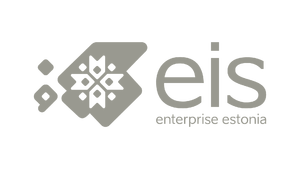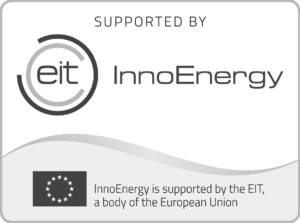12.09.2018
Needs-based innovation programmes: a new way to boost user-centered digital solutions in healthcare
“The Connected Health Cluster envisions Estonia as the best place to develop new health technology solutions. To do so, the cluster brings together all of the participants needed for innovation in healthcare and spearheads the development of an ecosystem conducive to innovation and entrepreneurship,” writes Kitty Kubo, Innovation Lead of Connected Health Cluster.
The cluster’s big goal centres on health technology companies, new products and services, and growth of turn-over and export. For companies, good cooperation with the healthcare sector is crucial to understand actual needs and engage clinical expertise – without these, it isn’t possible to succeed in this market. Yet healthcare is one of the most complex and conservative fields, where innovation is hindered not by the limitations of technology but by lack of demand.
To stimulate demand for digital solutions in healthcare and involve users – both doctors and patients – in co-creation of new solutions, in 2016 the cluster developed a unique innovation programme model that takes into account the specifics of the healthcare sector.
The needs-based innovation programme is distinct from other innovation and entrepreneurship support measures on the market (hackathons, incubators, accelerators, etc.) in terms of its systematic and structured approach – it covers the entire chain, from ill-defined needs right up to the well-designed solutions. Thanks to big pharma support, the programmes also fund the initial phase of the development of the most potential solutions.
The programme’s success factors are its sharp focus, its leadership, the user perspective and the commitment from problem owners, the application of agile working methods from the IT and start-up fields and naturally, a seed fund to finance the very first step from idea to solution.
By summer 2018, the programme model has been successfully implemented in two clinical fields: HIV and chronic obstructive pulmonary disease (COPD). The programmes, which last an average of 12 months, have resulted in new digital health solutions and start-ups that wouldn’t exist without the programmes.
The HIV programme, HIV digital, resulted in two new digital solutions and corresponding start-ups: hINF and Diagnostic Match Both companies are on their way to the market with their product, considering that it takes 2-3 years to get there in the healthcare sector. hINF, which is developing a patient-clinic communication app, also won the 2017 spring round of the national prototype fund Prototron and is now completing product testing West-Tallinn Central Hospital. Diagnostic Match, which develops a decision support algorithm based on data analysis to identify HIV-positive individuals, is conducting a clinical trial for validating the algorithm, and the Estonian Society of Family Doc-tors has filed an application to the Estonian Health Insurance Fund for inclusion of the service on the health insurance price list. Both companies are expanding their original HIV focus to suit various chronic diseases. For example, hINF has started a collaboration with North Estonia Medical Centre to adopt the application with the needs of cancer patients and Diagnostic Match is working with the new algorithms. Doctors are included in the ownership of both companies, which is considered one measure of the success of healthcare start-ups worldwide.
In cooperation with clinicians and tech firms, the COPD IN FOCUS programme developed prototypes for three new digital solutions, which were tested on users. On the following pages, you can read more about the three solutions. All of these solutions have the potential to improve the effectiveness of health-care and quality of life for patients. The six tech firms that collaborated value the opportunity for cooperation with doctors and patients made possible primarily by the programme.
The primary achievement of the programmes should be considered the imp-roved cooperation within the healthcare sector and with entrepreneurs, and the experiences that the cooperation has yielded. Thus, for healthcare policy-makers (the Ministry of Social Affairs, the Estonian Health Insurance Fund), the cluster’s innovation programmes fill a gap, which is stimulating innovation in Estonian healthcare. Hopefully, the experiences gained from implementing the programmes will provide invaluable insight when it comes to setting up the planned national healthcare innovation fund.
The programme has three phases:
Step 1: Defining needs from the user perspective
As the first step, problem owners from healthcare are brought on board: market regulators and payors, healthcare and social service providers (clinics, doctors and nurses), patients and family members. Collaboratively, the problems and needs that come up along the patient journey are identified, consensus is reached on what is worthy of focus, and expectations to potential solutions are articulated.
Step 2: Generating ideas for solutions with entrepreneurs and innovators
To find possible solutions to meet the needs, a challenge is held, where besides the problem owners, the innovators are invited to join. These are sources of potential new approaches and solutions, such as IT developers, service designers, students, start-ups and so on. The challenge culminates in a hackathon to find out the most promising of the various ideas and facilitate team-building for executing the ideas.
Step 3: Fast prototyping of the best ideas and testing them on users
To prototype and test the potential ideas, winning teams get seed funding and are offered 3-4 months of mentoring, and then they link up with the healthcare decision-makers to prepare for the adoption and upscale of the solution.












